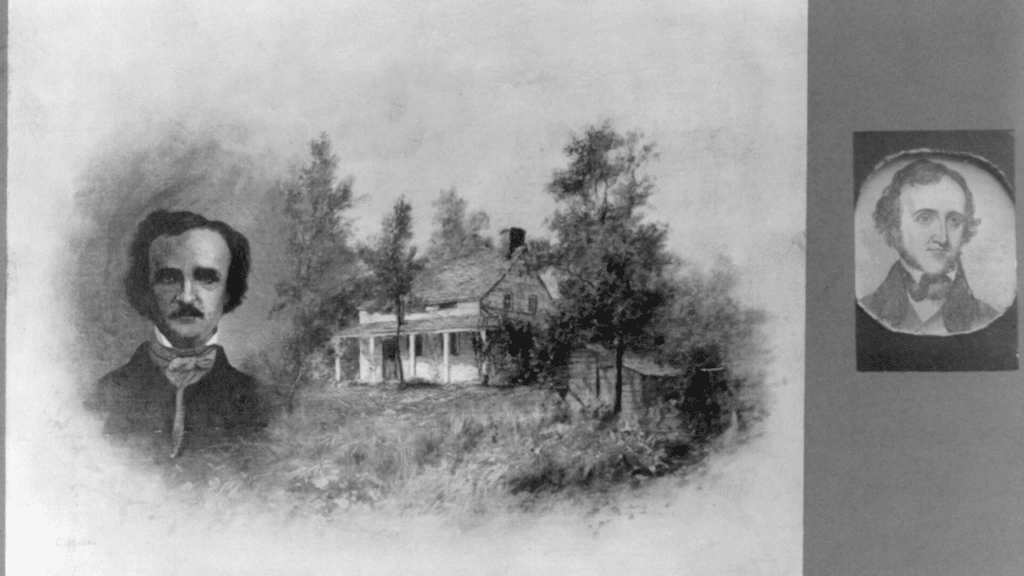Edgar Allan Poe, a seminal figure in Gothic horror, died tragically and mysteriously more than 150 years ago. His death is so enigmatic that it could be lifted straight from one of his own stories.
Edgar Allan Poe is a name forever linked with suspense and dark romance. His poem “The Raven” remains a timeless classic, inspiring a football team’s name. Without his groundbreaking work, “The Murders in the Rue Morgue,” the world might never have known iconic detectives like Sherlock Holmes and Hercule Poirot. As noted by Biography, Poe's distinctive, moody style has also influenced cultural giants such as Salvador Dalí and Alfred Hitchcock.
Recently, the buzz around Poe has been reignited with news that Mike Flanagan, the creator of “The Haunting of Hill House,” is adapting “The Fall of the House of Usher” into a series.
While many can quote a dark line or two from Poe’s works, few are familiar with his life and death's tragic and bizarre details.
Poe's life seemed destined for melancholy and scandal. Born to itinerant, alcoholic actors who both passed away within days of each other, Poe was sent to live with a foster family at just two years old. Later, at 27, he secretly married his cousin Virginia, who was only 13. The nature of their relationship remains a topic of debate, adding a layer of complexity to discussions of cultural norms. Virginia’s death from tuberculosis cut their relationship short, which was hardly surprising given Poe’s life circumstances.
During his lifetime, Poe epitomized the “starving artist” archetype. Struggling financially, he often turned to gambling to settle debts, only to end up deeper in financial trouble. This dire situation eventually led him to enlist in the army to escape his creditors.
Poe’s breakthrough came with “The Raven,” which gained him international acclaim. Other works, such as “Tales of the Grotesque and Arabesque” and “The Tell-Tale Heart,” began to earn him recognition and praise. At last, his long-sought literary success seemed within reach.
Then came his untimely death. On a rainy Baltimore night in 1849, on Election Day, Poe was found disoriented, wearing ragged clothes that did not belong to him. He spent the following days in a hysterical condition, slipping in and out of hallucinations and repeatedly calling out a name, “Reynolds,” which remains a mystery. His final words were reportedly, “Lord help my poor soul.”
Although the official cause of death was listed as “brain swelling,” many alternative theories abound. Some suggest thugs beat him after being abandoned in a drunken state. Others propose that a gang fight may have been incited by a woman scorned by Poe, given his reputation for turbulent relationships.
Another theory involves “cooping,” a 19th-century method of voter fraud where victims were abducted, disguised, and forced to vote multiple times. Considering Poe’s state and the historical context, he might have been coerced into voting under various aliases, potentially leading to his demise.
A more recent hypothesis suggests rabies might have been the cause, although this is unlikely since Poe showed no signs of hydrophobia—a common symptom of rabies.
When Poe’s grave was later exhumed, an unidentified mass was discovered in his skull, which current studies suggest could have been a fatal brain tumor. It’s possible that Poe’s brilliant mind suffered in silence, adding a layer of tragic irony to his creative legacy.
Other proposed causes include carbon monoxide poisoning, heavy metal poisoning, and alcohol poisoning, though the latter is considered less compelling.
Regardless of the actual cause of his death, Edgar Allan Poe’s legacy endures, continuing to fascinate and inspire. His ability to transform the grotesque into the beautiful remains a hallmark of his work. Though he may be gone, the timeless nature of his poetry and stories will forever captivate readers.
 Skip to content
Skip to content
